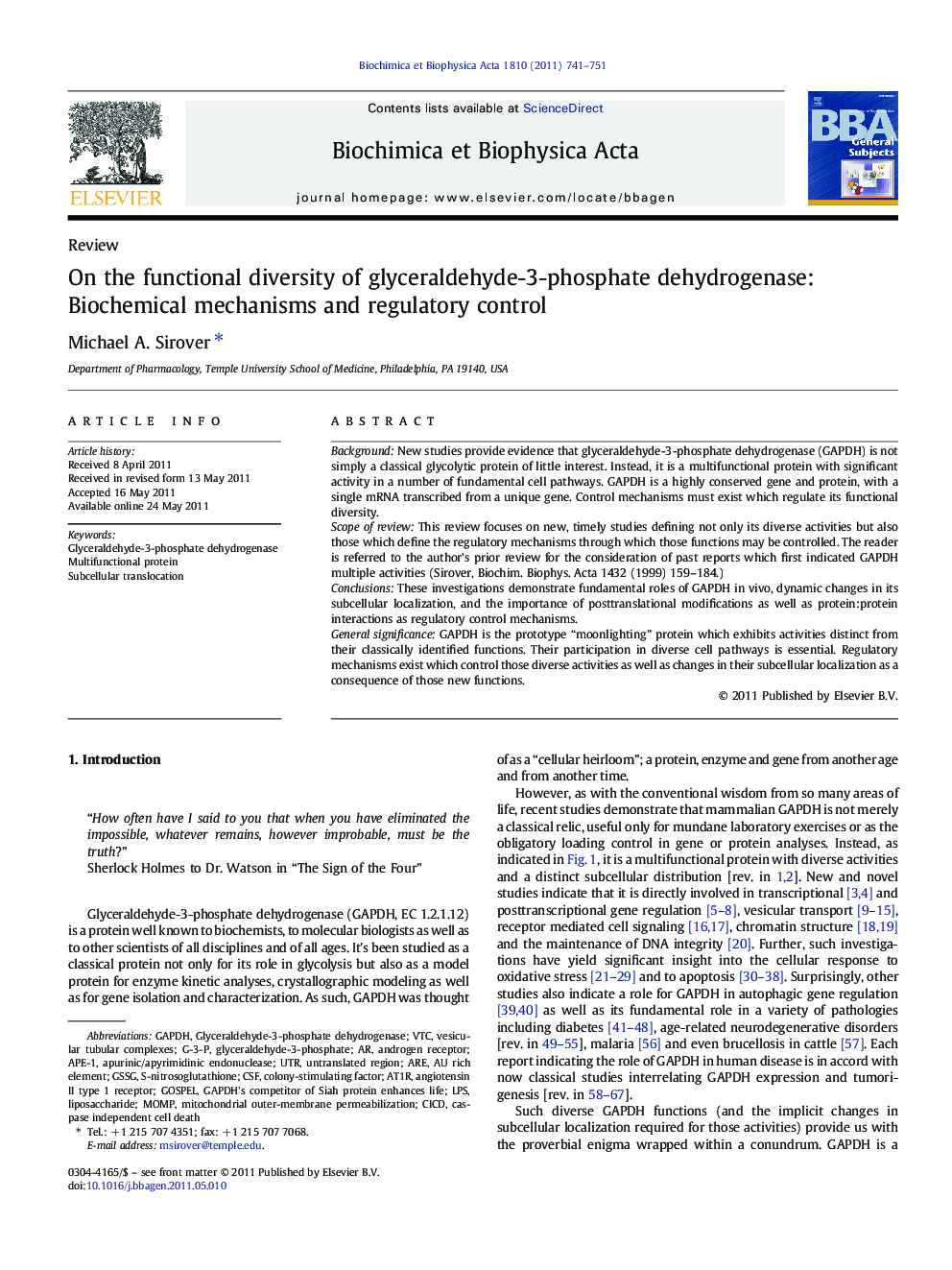| کد مقاله | کد نشریه | سال انتشار | مقاله انگلیسی | نسخه تمام متن |
|---|---|---|---|---|
| 1947805 | 1054649 | 2011 | 11 صفحه PDF | دانلود رایگان |

BackgroundNew studies provide evidence that glyceraldehyde-3-phosphate dehydrogenase (GAPDH) is not simply a classical glycolytic protein of little interest. Instead, it is a multifunctional protein with significant activity in a number of fundamental cell pathways. GAPDH is a highly conserved gene and protein, with a single mRNA transcribed from a unique gene. Control mechanisms must exist which regulate its functional diversity.Scope of reviewThis review focuses on new, timely studies defining not only its diverse activities but also those which define the regulatory mechanisms through which those functions may be controlled. The reader is referred to the author's prior review for the consideration of past reports which first indicated GAPDH multiple activities (Sirover, Biochim. Biophys. Acta 1432 (1999) 159–184.)ConclusionsThese investigations demonstrate fundamental roles of GAPDH in vivo, dynamic changes in its subcellular localization, and the importance of posttranslational modifications as well as protein:protein interactions as regulatory control mechanisms.General significanceGAPDH is the prototype “moonlighting” protein which exhibits activities distinct from their classically identified functions. Their participation in diverse cell pathways is essential. Regulatory mechanisms exist which control those diverse activities as well as changes in their subcellular localization as a consequence of those new functions.
► GAPDH is a multidimensional protein with functions distinct from glycolysis.
► Its independent activities depend on its dynamic subcellular translocation.
► Its functional diversity is regulated posttranslationally.
► Multiple mechanisms may be required for its nuclear translocation.
Journal: Biochimica et Biophysica Acta (BBA) - General Subjects - Volume 1810, Issue 8, August 2011, Pages 741–751